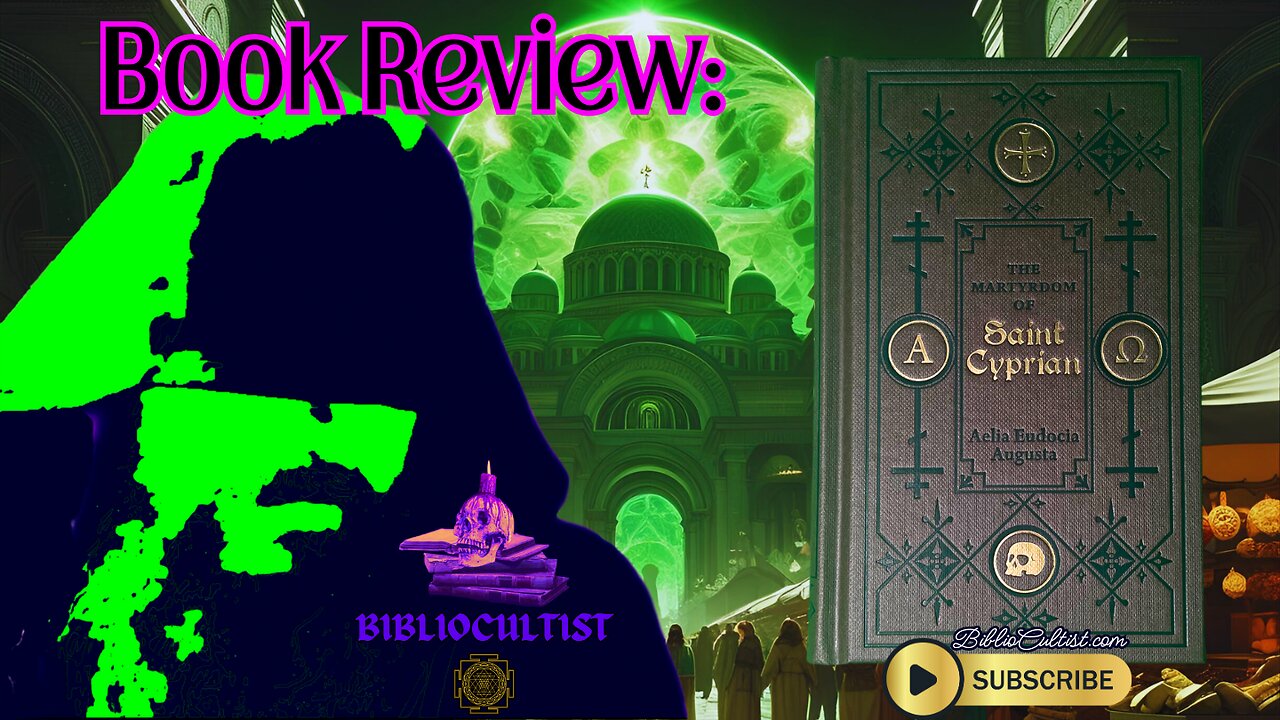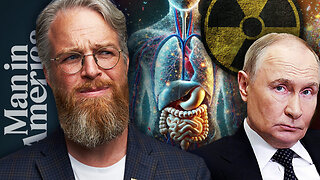Premium Only Content

DEMONIC LUST vs CHRISTIAN VIRTUE
*CHECK OUT MY MERCH: https://bibliocultist.printful.me/*
In this fascinating #bookreview, I explore 'The Martyrdom of St. Cyprian' by Aelia Eudocia Augusta, a captivating work that delves into the magical and devotional aspects of early Christianity. The book offers a unique perspective on the historical context of early Christian literature, blending pagan and Christian elements. I discuss the author's background and the intriguing story of Justa, a devout Christian girl who resists demonic temptations through the power of the cross. This review sheds light on the theological debates of the time and provides insight into the complex world of early Christianity.
*all music and content copyright BiblioCultist.com*
#booktube #books #EarlyChristianity #StCyprian #AeliaEudociaAugusta #ChristianLiterature #Theology #Martyrdom #biblio #cultist
**SHOW NOTES**
1. Aelia Eudocia Augusta was a Byzantine empress, poet, and Christian intellectual. Born Athenais in Athens to a pagan philosopher, she converted to Christianity upon marrying Emperor Theodosius II (421 AD) and took the name Eudocia. Known for her literary talent, she composed biblical paraphrases, hymns, and the Martyrdom of Saint Cyprian, blending classical Greek style with Christian themes. After a political fallout, she retired to Jerusalem (443 AD), where she continued writing and patronizing religious projects until her death. Her works bridge late antique paganism and Byzantine Christianity, securing her legacy as one of antiquity’s most learned women.
2. The Council of Ephesus (431 AD) condemned Nestorius and affirmed Mary as Theotokos ("God-bearer"), defending Christ’s unity as both divine and human. The Council of Chalcedon (451 AD) defined Christ as one person in two natures (divine and human), rejecting both Nestorianism and Monophysitism. These councils shaped orthodox Christian doctrine and deepened divisions between the Byzantine Church and non-Chalcedonian groups (e.g., Oriental Orthodox).
3. Protestants who reject the title Theotokos ("Mother of God") risk echoing Nestorianism, the 5th-century heresy condemned at the Council of Ephesus (431 AD). Nestorius argued that Mary was only Christotokos ("Mother of Christ"), separating Jesus’ humanity from His divinity—a denial of the hypostatic union. By opposing Theotokos, modern Protestants unintentionally revive this partition, undermining the core Christian doctrine that Christ is one divine Person (John 1:1, 14) whose human and divine natures are inseparable. The early Church insisted on Theotokos to safeguard the truth that the child born of Mary was, and is, God incarnate.
4. “Let us not be ashamed to confess the Crucified. Let the cross be our seal, made with our fingers on our brow and over everything—on the bread we eat, the cups we drink, our comings and goings, before sleep, when we lie down and rise, on journeys, and at rest. It is a powerful safeguard; it is cheap, for no poverty need lack it; it is honorable, for it is the sign of the Lord. By it the faithful are distinguished from the unfaithful." — Catechetical Lectures (Lecture 13, §36)
5. The Latin West implemented several notable departures from ancient Christian traditions, including altering the sign of the cross (from right-to-left to left-to-right), eliminating pedocommunion (infant Eucharist was suddenly withheld in the West), adopting unleavened bread for the Eucharist (vs. Eastern leavened bread), enforcing clerical celibacy (while the East allows married priests), and later adding the Filioque to the Nicene Creed—a change rejected by the Orthodox East. These shifts, often tied to medieval Latin theology, contributed to the Great Schism (1054) and enduring liturgical differences.
-
 56:11
56:11
X22 Report
4 hours agoMr & Mrs X - Women Are Fighting Back Against Men In Women's Spaces, It Has Begun - EP 15
37.3K14 -
 LIVE
LIVE
I_Came_With_Fire_Podcast
10 hours agoDark Hollywood, Ghosts on 'Cops', and Government Cover-Ups
172 watching -
 20:46
20:46
Jasmin Laine
1 day agoJoe Rogan Drops NUKE—Carney’s Secret Deal + 100,000 Kamloops Homes at Risk
13.1K30 -
 4:00
4:00
Mrgunsngear
1 day ago $20.01 earnedFirst They Came For Glock, Now They're Coming For The Ruger RXM
27.9K18 -
 1:42:46
1:42:46
Lara Logan
1 day agoINJECTING TRUTH INTO THE VACCINE DEBATE with Del Bigtree | Ep 43 | Going Rogue with Lara Logan
20.7K34 -
 12:55
12:55
Cash Jordan
21 hours agoNYC Busses 'MOBBED' by Millionaires... as "Communist" Mayor VOWS to END AMERICA
17.5K34 -
 18:54
18:54
Bearing
1 day agoNew York COMMUNIST TAKEOVER 🚨 Zoran Mamdani’s Revolution 💥
19K91 -
 1:05:26
1:05:26
Man in America
1 day ago“Poseidon” Doomsday Sub, Microplastics & The War on Testosterone w/ Kim Bright
50.6K55 -
 12:15
12:15
Degenerate Jay
23 hours ago $0.49 earnedIs GTA 6 In Trouble?
6.61K -
 6:40:54
6:40:54
FyrBorne
16 hours ago🔴Battlefield 6 Live M&K Gameplay: Who's Hunting Who?
49.4K